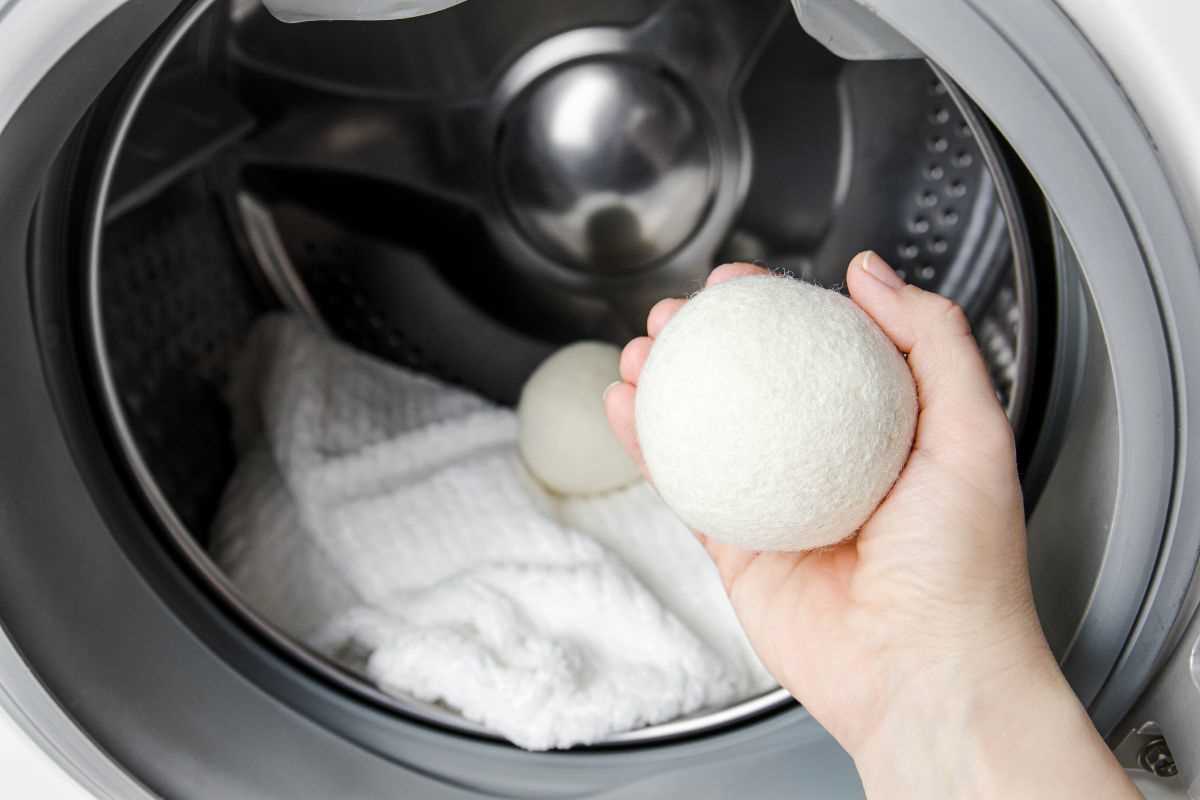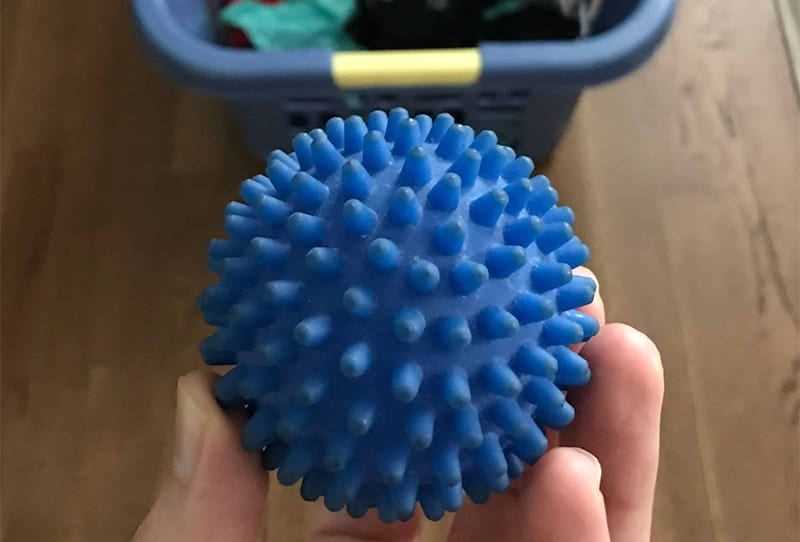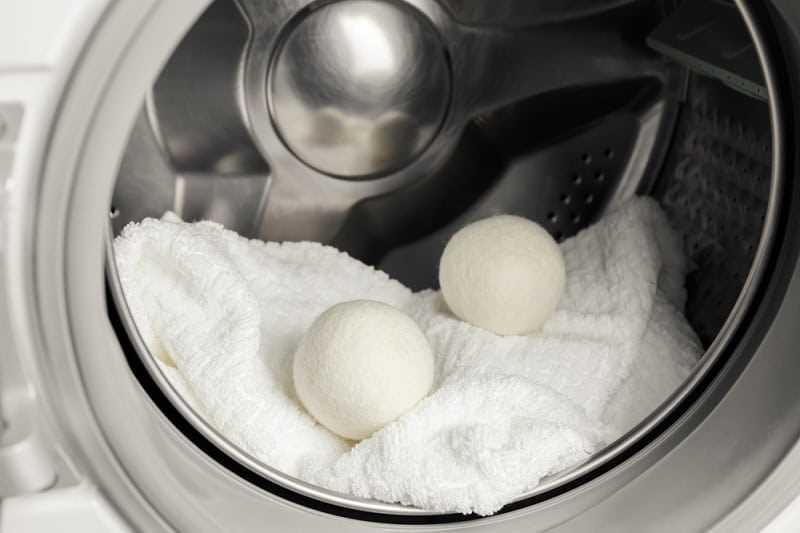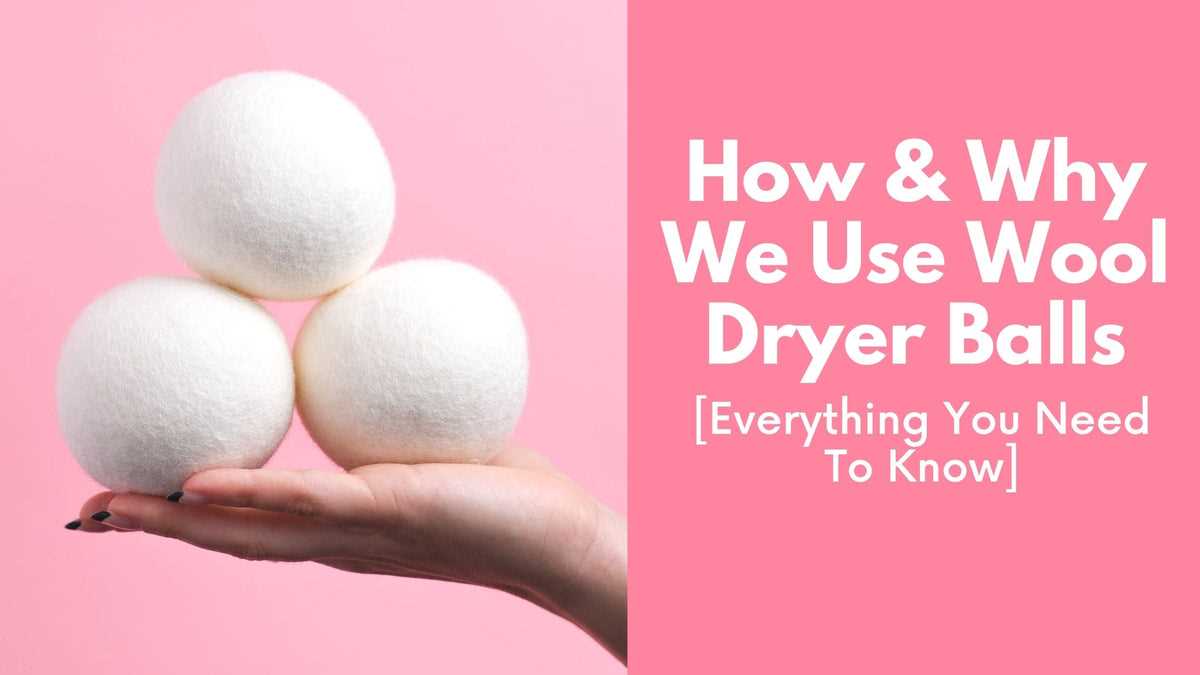




Dryer balls are a popular laundry accessory that can help to reduce drying time, soften fabrics, and prevent static cling. But when it comes to using dryer balls, how many should you use per load?
The answer to this question can depend on a few factors, such as the size of your load and the type of fabric you are drying. In general, it is recommended to use two to four dryer balls per load. This can help to ensure that the balls have enough space to circulate and work their magic on the fabrics.
If you are drying a smaller load or more delicate fabrics, you may want to start with just two dryer balls. This can help to prevent over-drying and damage to the fabrics. On the other hand, if you are drying a larger load or heavier fabrics, you may want to use four dryer balls to ensure that all of the fabrics are properly dried.
It’s also worth noting that dryer balls can be used in conjunction with other laundry accessories, such as fabric softener or dryer sheets. If you prefer to use these products, you can simply add them to your laundry along with the dryer balls. However, keep in mind that using too many products can potentially weigh down your fabrics and reduce the effectiveness of the dryer balls.
So, the next time you’re doing laundry, consider adding a few dryer balls to the mix. Experiment with the number of balls used per load to find the perfect balance for your laundry needs. Whether you’re drying a small load or a large load, a few dryer balls can help to reduce drying time, soften fabrics, and prevent static cling.
Overall, using two to four dryer balls per load is a good starting point. However, it’s important to remember that every load is different, and you may need to adjust the number of balls based on your specific laundry needs. With a little experimentation, you can find the perfect number of dryer balls to make your laundry routine more efficient and effective.
The Importance of Dryer Balls

Dryer balls are becoming increasingly popular as a natural alternative to dryer sheets. These small, ball-shaped objects are typically made of materials like wool or plastic and are designed to soften fabrics, reduce static cling, and help clothes dry faster.
1. Softens Fabrics
Dryer balls work by separating and fluffing the laundry as it tumbles in the dryer. This action helps to keep the fabrics soft and prevent them from becoming stiff or rough. With dryer balls, you can say goodbye to the need for chemical-laden fabric softeners.
2. Reduces Static Cling
Static cling occurs when fabrics rub against each other in the dryer. This can be particularly annoying when folding or wearing the clothes. Dryer balls help reduce static cling by creating space between the clothes, preventing excessive friction that causes static electricity. This means less time spent dealing with clingy clothes and more time enjoying static-free garments.
3. Speeds Up Drying Time
Dryer balls promote better air circulation within the dryer. When used in combination with the tumbling action of the machine, they help to break up the clumps of wet laundry and increase the surface area exposed to the heat. This improved drying efficiency can significantly reduce the time needed for clothes to dry, saving both time and energy.
4. Environmentally Friendly
Using dryer balls is an environmentally friendly choice. Unlike traditional dryer sheets, which are often made of synthetic materials and are disposed of after each use, dryer balls can be reused for many loads of laundry. They also eliminate the need for fabric softeners and other chemical-based products, reducing the overall chemical load on the environment.
5. Cost-Effective
While the upfront cost of dryer balls may be higher than that of dryer sheets, they are a cost-effective option in the long run. As they can be reused for a long time, dryer balls eliminate the need for purchasing fabric softeners or dryer sheets on a regular basis. This can result in significant cost savings over time.
In conclusion, dryer balls offer several benefits for your laundry routine. From softening fabrics and reducing static cling to speeding up drying time and being environmentally friendly, they are a versatile and practical addition to any dryer. Consider using dryer balls to improve the effectiveness of your laundry routine and enjoy the benefits they have to offer.
Benefits of Using Dryer Balls
- Faster drying times: When you use dryer balls, they create space between your laundry items, allowing hot air to circulate more efficiently. This can help to reduce drying times by up to 25%, saving you both time and money in the long run.
- Energy efficiency: With shorter drying times, using dryer balls can also help to reduce your energy consumption. By cutting down on the amount of time your dryer is running, you can reduce your electricity or gas usage, resulting in lower energy bills and a smaller carbon footprint.
- Softens clothes: Dryer balls work by gently agitating your laundry as it tumbles in the dryer. This can help to soften fabrics, making them feel fluffier and more comfortable to wear. No need for chemical-filled fabric softeners or dryer sheets!
- Reduces static: Tired of dealing with static cling in your clothes? Dryer balls can help with that too! As they bounce around in the dryer, they help to separate the clothes and prevent them from sticking together, reducing the build-up of static electricity.
- Environmentally friendly: Unlike traditional fabric softeners and dryer sheets, dryer balls are a reusable and chemical-free alternative. They are typically made from natural materials like wool or rubber, making them a more sustainable option for both your laundry routine and the environment.
In conclusion, using dryer balls can offer a range of benefits, from saving time and energy to softening clothes and reducing static. Consider adding them to your laundry routine to enjoy these advantages while also being kinder to the planet.
Factors to Consider When Using Dryer Balls
Dryer balls can be a great addition to your laundry routine, but there are several factors to consider when determining how many to use per load:
- Type of dryer balls: There are various types of dryer balls available on the market, such as plastic, wool, and silicone. Different types may require different quantities to achieve the desired results.
- Load size: The size of your laundry load can affect how many dryer balls you should use. A larger load may require more dryer balls to ensure that the clothes are properly agitated and separated.
- Fabric types: Different fabrics may have different drying requirements. Delicate fabrics may require fewer dryer balls to prevent damage, while heavier fabrics may require more dryer balls for better drying and fluffing.
- Personal preference: Some people prefer a softer and fluffier result, while others prioritize reducing drying time and preventing wrinkles. Your personal preference will determine how many dryer balls you use to achieve your desired outcome.
- Quality of dryer balls: The quality of the dryer balls can also impact the number needed. High-quality dryer balls may be more effective at reducing drying time and improving softness, requiring fewer balls.
- Energy efficiency: Using dryer balls can help reduce drying time and save energy. If you’re aiming for maximum energy efficiency, you may want to experiment with different quantities of dryer balls to find the minimum needed to achieve the desired results.
It’s important to note that there is no one-size-fits-all answer to how many dryer balls should be used per load. Finding the perfect number will require some experimentation and can vary depending on the factors listed above. Start with a few dryer balls and adjust the quantity based on your preferences and the specific characteristics of your laundry load.
How Many Dryer Balls Should You Use?
Dryer balls are a great way to naturally soften fabrics, reduce static cling, and decrease drying time. But how many dryer balls should you use per load? Finding the perfect number can depend on a few different factors.
Type of Dryer Balls

There are different types of dryer balls available, such as wool dryer balls and plastic dryer balls. Wool dryer balls tend to be more effective at softening fabrics and reducing drying time. On the other hand, plastic dryer balls may not be as effective, but they can still help with reducing static cling. The type of dryer balls you have can influence the number you should use per load.
Load Size
The size of your laundry load can also impact how many dryer balls you should use. For smaller loads, using fewer dryer balls may be sufficient. However, for larger loads, you may need to use more dryer balls to ensure that each item of clothing comes into contact with a dryer ball.
Personal Preference

Ultimately, the number of dryer balls you use can come down to personal preference. Some people find that using a higher number of dryer balls helps achieve better results, while others may find that a smaller number works just fine. It can be helpful to experiment with different amounts and see what works best for you and your laundry.
Recommended Guidelines
As a general guideline, starting with 2-4 dryer balls per load is a good place to begin. From there, you can adjust the number based on your specific needs and preferences. It’s important to note that using too many dryer balls can create an imbalanced load, which can lead to inefficient drying and potential damage to your dryer.
Remember to follow the manufacturer’s instructions for the specific type of dryer balls you are using, as they may have their own recommendations for the optimal number to use per load. By finding the perfect number of dryer balls for your laundry, you can maximize their benefits and achieve the desired results.
Tips for Finding the Perfect Number
1. Start with Manufacturer’s Recommendations
When using dryer balls, it’s always a good idea to start with the manufacturer’s recommendations. Different brands of dryer balls may have different instructions on the number of balls to use per load. These recommendations are often based on the size of the load and the materials being dried.
2. Consider the Size of the Load
The size of the load can affect how many dryer balls you should use. For small loads or items that don’t need much agitation, you may only need a few dryer balls. For larger loads or heavy items like towels or bedding, you may want to use more dryer balls to help distribute heat and reduce drying time.
3. Experiment with Different Numbers
Finding the perfect number of dryer balls may require some trial and error. Start with a recommended number of balls for your load size, and then experiment by adding or removing balls. Keep track of the drying time and the overall effectiveness of the dryer balls to determine the optimal number.
4. Consider the Materials Being Dried
The materials being dried can also impact the number of dryer balls needed. Lighter fabrics like shirts or delicates may require fewer balls, while heavier fabrics like jeans or blankets may benefit from additional balls. Consider the texture, thickness, and weight of the fabrics to determine the appropriate number of dryer balls.
5. Monitor the Drying Time
One of the key benefits of using dryer balls is reducing drying time. If you find that your clothes are taking longer to dry than usual, it may be a sign that you need to adjust the number of dryer balls. Adding more balls can help increase agitation and airflow, leading to shorter drying times.
6. Maintain a Balanced Load
Regardless of the number of dryer balls used, it’s important to maintain a balanced load in the dryer. Avoid overpacking the dryer, as this can impede the balls’ ability to move freely and provide optimal results. Make sure there is enough space for the balls to roll and tumble during the drying cycle.
7. Share Your Tips and Experiences

Don’t be afraid to share your tips and experiences with others. Dryer balls can vary in effectiveness depending on the brand, material, and load size, so sharing your insights can help others find their perfect number of dryer balls. Join online communities or forums to exchange information and learn from others.
8. Reevaluate as Needed

Lastly, it’s important to periodically reevaluate the number of dryer balls you are using. As your laundry needs change or you try different fabrics, you may find that the optimal number of balls also changes. Stay open to making adjustments and finding the perfect number for each load.
By following these tips and being mindful of your specific laundry needs, you can find the perfect number of dryer balls to maximize drying efficiency and improve the overall quality of your laundry.
FAQ
How many dryer balls should I use for a small load of laundry?
For a small load of laundry, it is recommended to use 2-3 dryer balls. This will help to increase the efficiency of your dryer and reduce drying time.
Is it necessary to use dryer balls for every load of laundry?
Using dryer balls for every load of laundry is not necessary, but it can be beneficial. They help to separate clothes, reduce static, and decrease drying time. If you prefer to use dryer balls, it is recommended to use 4-6 balls per load.
How many dryer balls should I use for a large load of laundry?
For a large load of laundry, it is recommended to use 4-6 dryer balls. This will help to ensure proper airflow and reduce drying time. If you find that your clothes are not drying efficiently, you may want to consider using more dryer balls.
Can I use too many dryer balls per load?
Using too many dryer balls per load can actually be counterproductive. If you use too many, they can become crowded and prevent proper airflow. It is recommended to use 4-6 dryer balls per load for optimal results.
What happens if I don’t use any dryer balls?
If you choose not to use any dryer balls, your clothes may take longer to dry. Without dryer balls, your clothes may also have more wrinkles and static. Dryer balls help to agitate the clothes, separate them, and improve air circulation for better drying efficiency.











